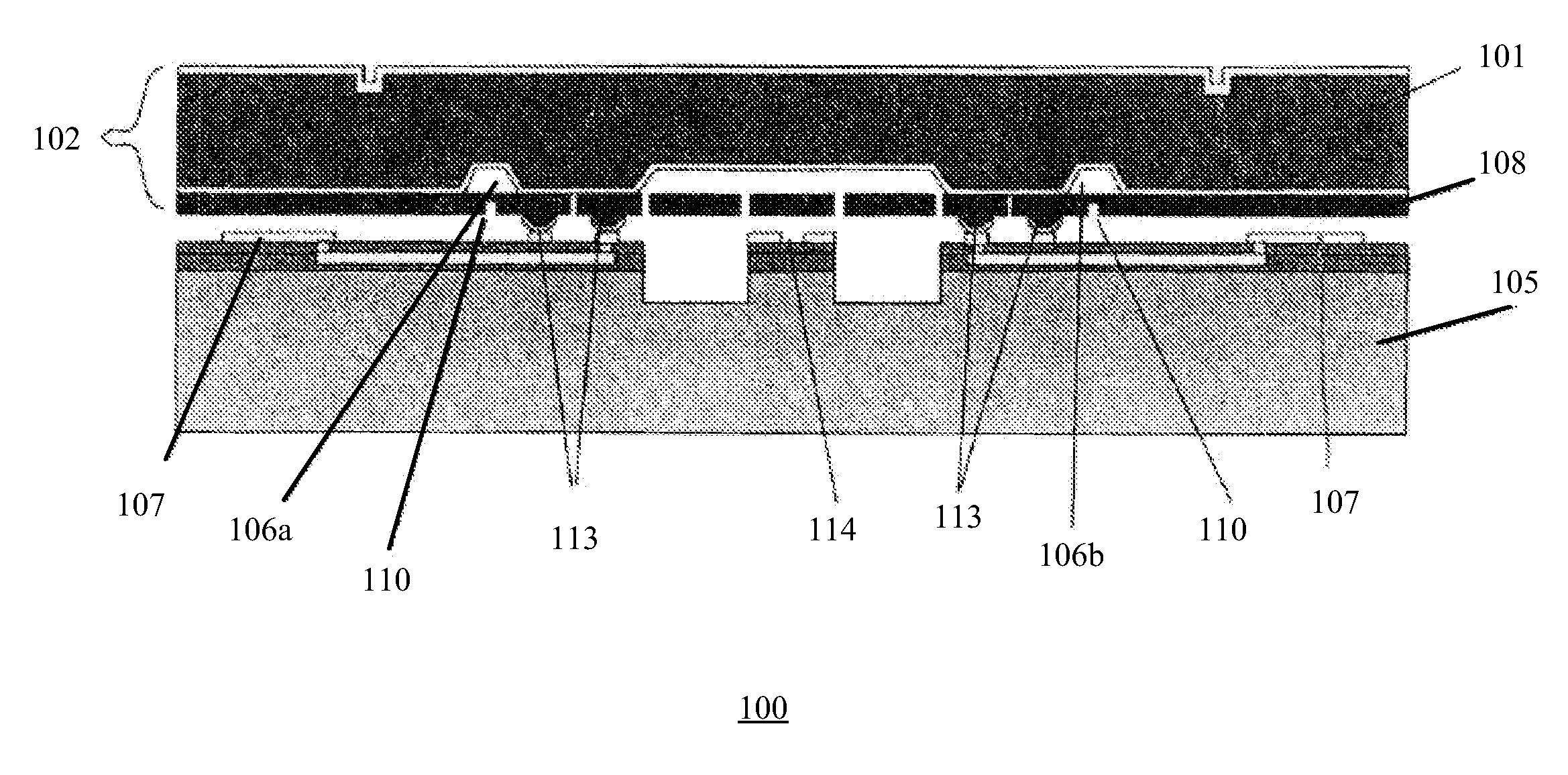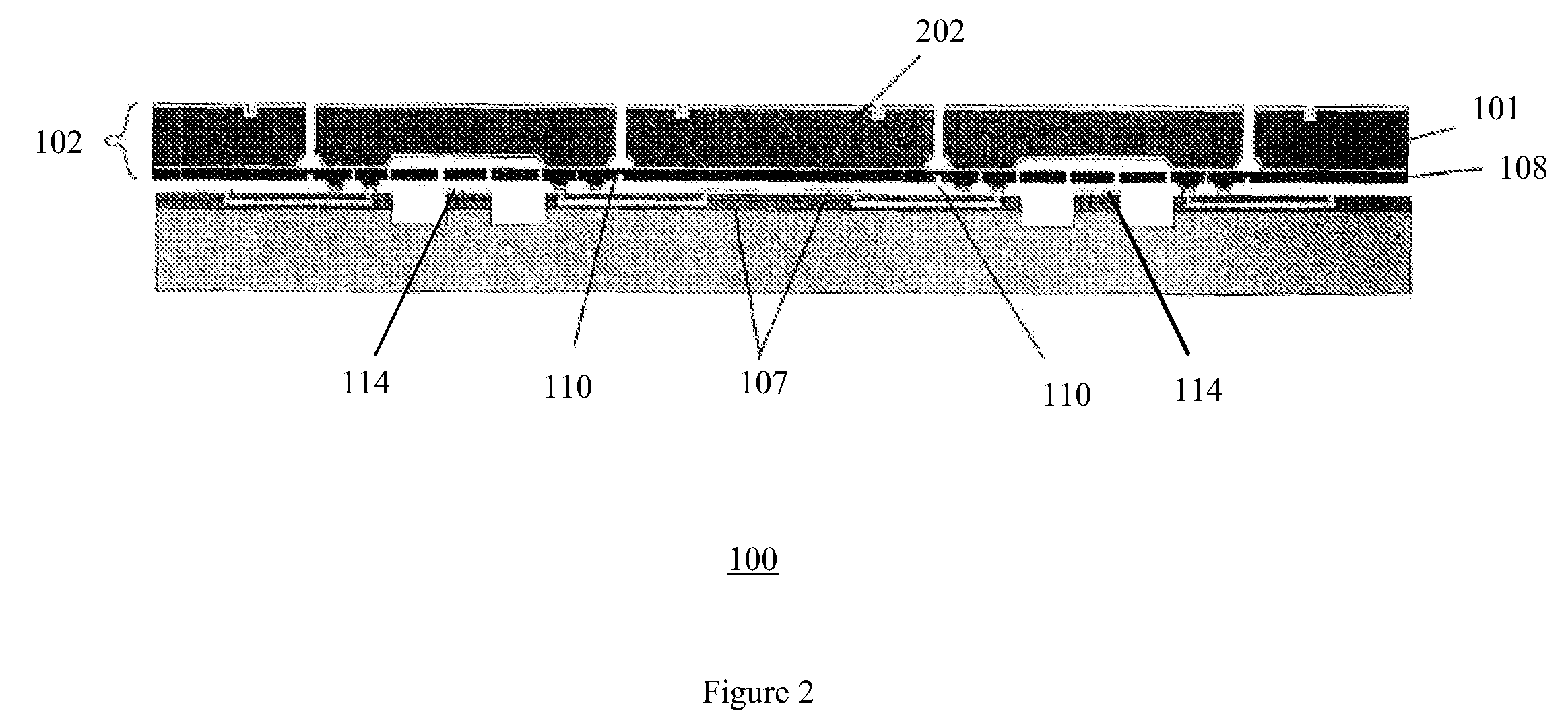Method and system of releasing a MEMS structure
a mems and structure technology, applied in the field of mems structure, can solve the problems of high non-standard packaging, and general fragility of the mems feature, and achieve the effect of reducing the cost of many mems devices and reducing the risk of damag
- Summary
- Abstract
- Description
- Claims
- Application Information
AI Technical Summary
Problems solved by technology
Method used
Image
Examples
Embodiment Construction
[0023]The present invention relates generally to a MEMS structure and more specifically to a method and system for releasing such a structure after manufacturing. The following description is presented to enable one of ordinary skill in the art to make and use the invention and is provided in the context of a patent application and its requirements. Various modifications to the preferred embodiments and the generic principles and features described herein will be readily apparent to those skilled in the art. Thus, the present invention is not intended to be limited to the embodiments shown, but is to be accorded the widest scope consistent with the principles and features described herein.
[0024]The following describes a preferred embodiment in accordance with the present invention. FIG. 1 is a MEMS device 100. The MEMS device 100 includes a MEMS cover structure 102 which comprises two bonded MEMS wafers 101 and 108 over a desired structure 114 on a substrate wafer 105. A plurality o...
PUM
 Login to View More
Login to View More Abstract
Description
Claims
Application Information
 Login to View More
Login to View More - R&D
- Intellectual Property
- Life Sciences
- Materials
- Tech Scout
- Unparalleled Data Quality
- Higher Quality Content
- 60% Fewer Hallucinations
Browse by: Latest US Patents, China's latest patents, Technical Efficacy Thesaurus, Application Domain, Technology Topic, Popular Technical Reports.
© 2025 PatSnap. All rights reserved.Legal|Privacy policy|Modern Slavery Act Transparency Statement|Sitemap|About US| Contact US: help@patsnap.com



